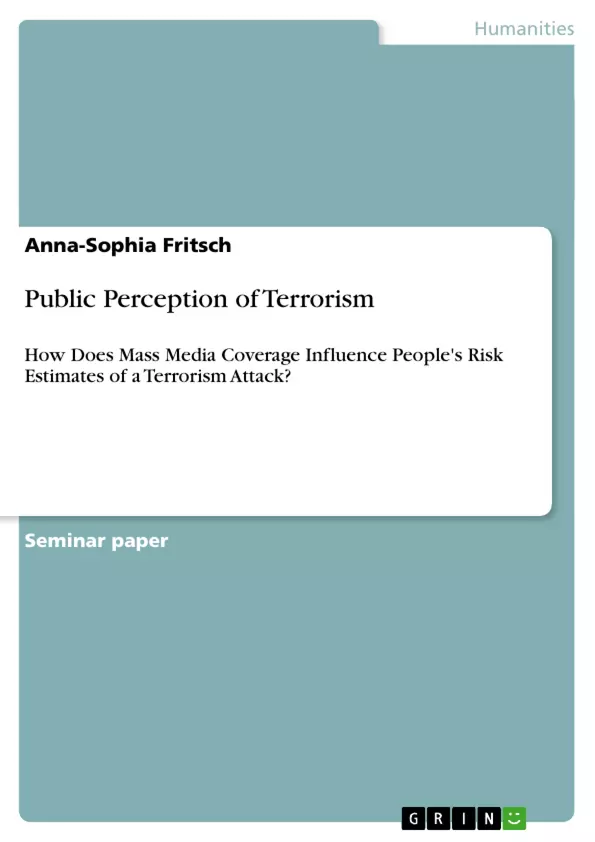The bombing of various US-institutions in Germany attempted by a small group of Islamistic terrorists calling themselves the Islamic Dschihad in September 2007 was widely reported in all German mass media channels. This paper is an effort to analyze how reports emotionally framed by fear-appeals and appeals to uncertainty lead to heuristic and shallow information processing on the part of the readers, who consequently overestimate the likelihood of a terrorist attack and therefore become more likely to approve of action recommendations such as precautionary policy changes. By applying the Social Amplification/Attenuation of Representations Framework (Kasperson, 1988, 1992) on the reports of three of the largest German newspapers, Die Zeit, Die Welt and Spiegel, it is illustrated how the secondary consequences of a risk event serve as amplifiers of the original risk and activate representations of similar events within readers.
Inhaltsverzeichnis (Table of Contents)
- Abstract
- Introduction
- Theoretical groundwork
- The Social Amplification / Attenuation of Representations Framework
- Social Constructivism, Social Representations Theory
Zielsetzung und Themenschwerpunkte (Objectives and Key Themes)
This paper examines how media coverage of terrorism influences public perception of risk and subsequent policy decisions. It analyzes the impact of fear-appeals and uncertainty in media reports on information processing, leading to overestimations of risk and support for precautionary measures.
- The influence of mass media on public perception of risk
- The role of emotional appeals in media coverage of terrorism
- The Social Amplification/Attenuation of Representations Framework (SARF) and its application to terrorism
- The impact of media coverage on public support for security policies
- The relationship between risk perception and policy decisions
Zusammenfassung der Kapitel (Chapter Summaries)
- Abstract: This section provides a brief overview of the paper's focus on analyzing how fear-appeals and uncertainty in media coverage of terrorism influence public perception of risk and lead to support for security policies. The paper will utilize the Social Amplification/Attenuation of Representations Framework (SARF) to analyze coverage in German newspapers.
- Introduction: This chapter introduces the idea that all human behavior, including communication, is a form of message transmission. It highlights the powerful influence of mass media on public perception and the potential for emotional appeals in media messages to influence affect, cognition, and behavior. Specifically, the focus is on how fear appeals in media coverage of terrorism can impact individuals' risk estimates and policy preferences.
- Theoretical groundwork: This section delves into the Social Amplification/Attenuation of Representations Framework (SARF) developed by Kasperson, which provides a framework for understanding how public and expert perceptions of risk can differ. It explains how the SARF highlights the role of social and cultural factors in shaping risk perception and how risks viewed as marginal by experts can trigger amplified societal responses. The chapter then discusses social constructivism and social representations theory, explaining how the meaning of abstract concepts like "risk" is socially constructed and influenced by communication and shared beliefs.
Schlüsselwörter (Keywords)
The key themes and concepts explored in this paper include public perception of terrorism, risk psychology, mass media coverage, fear appeals, uncertainty, Social Amplification/Attenuation of Representations Framework (SARF), social constructivism, social representations theory, and risk communication.
- Citation du texte
- Anna-Sophia Fritsch (Auteur), 2011, Public Perception of Terrorism, Munich, GRIN Verlag, https://www.grin.com/document/192003



